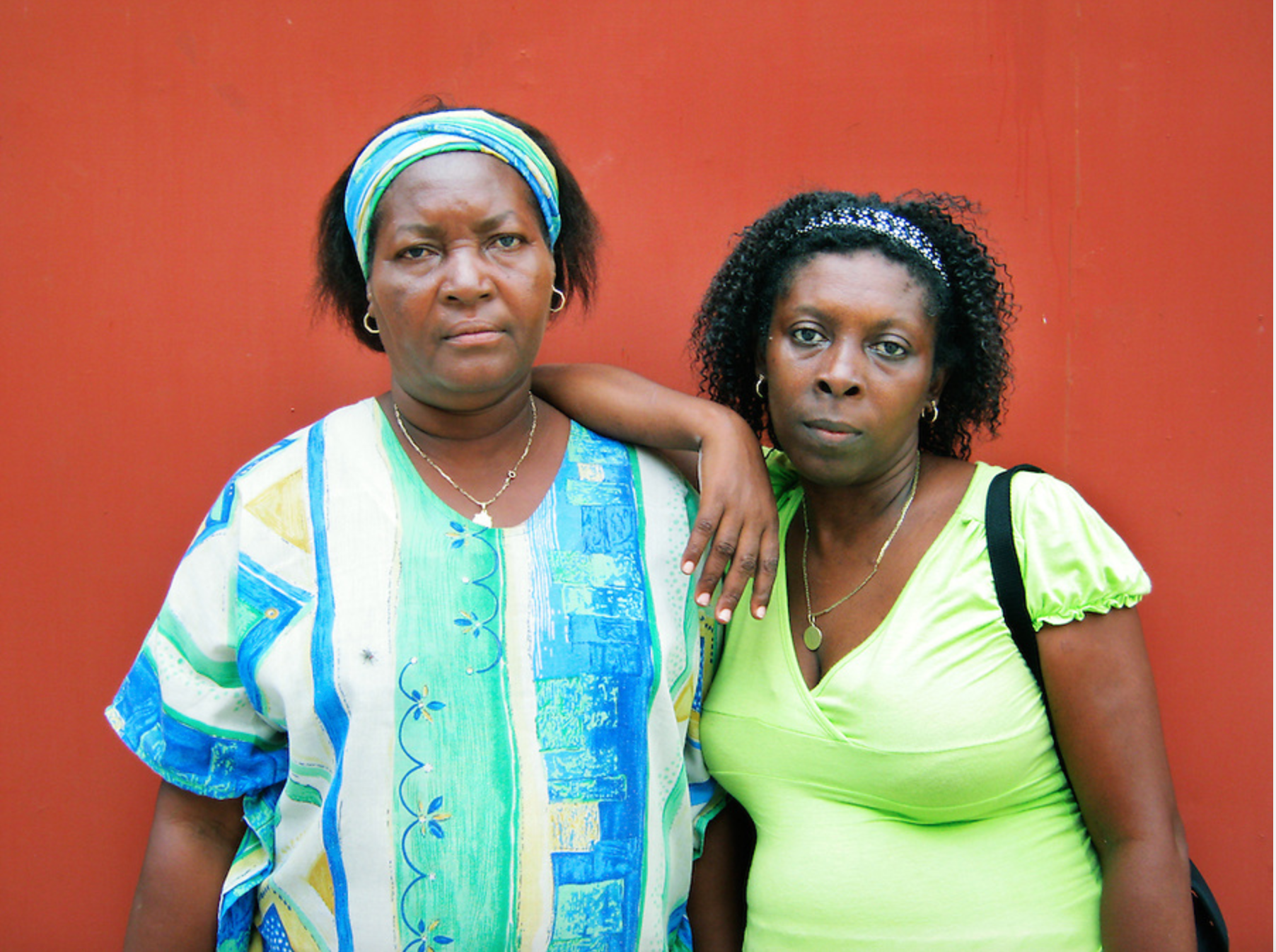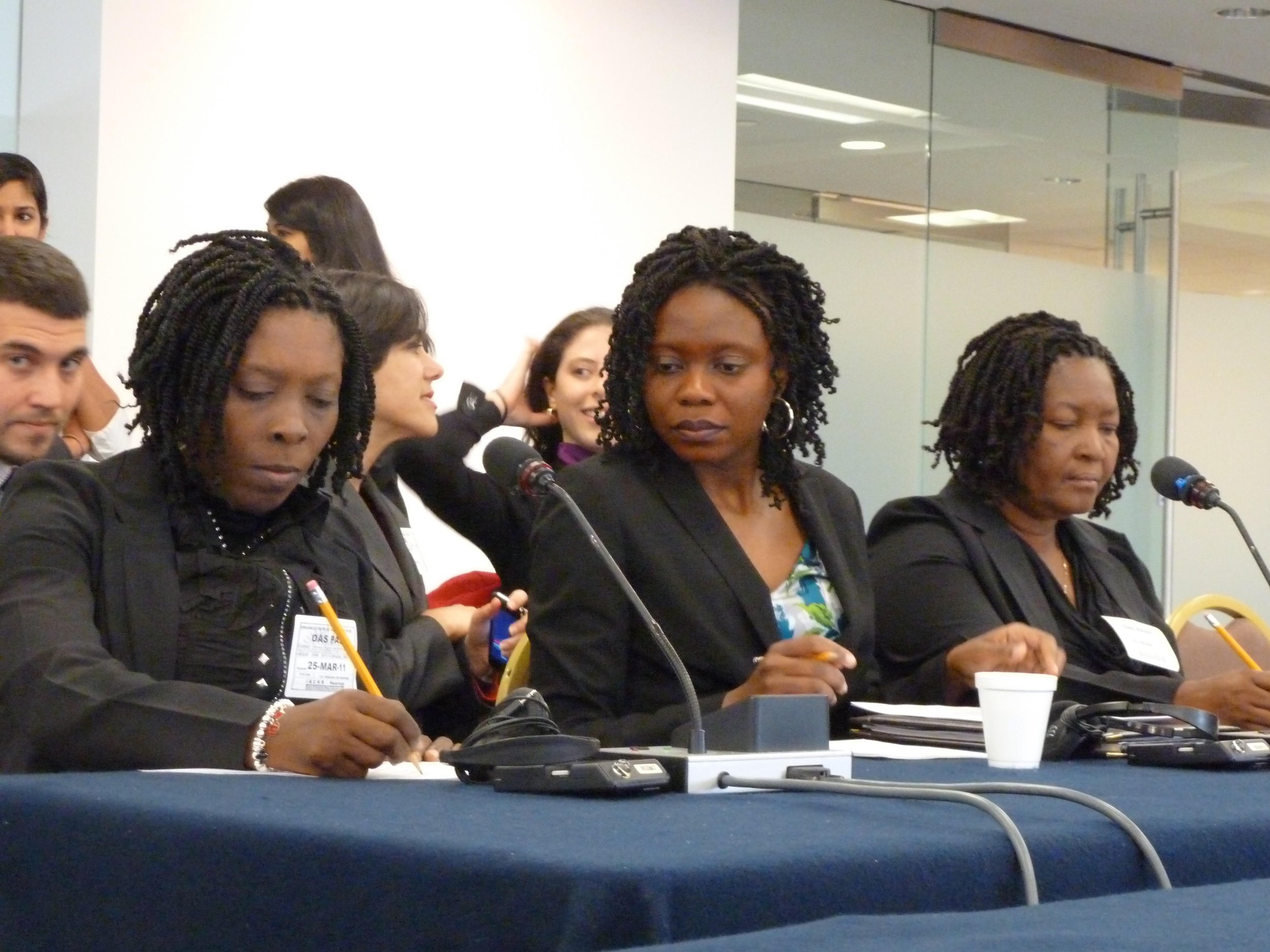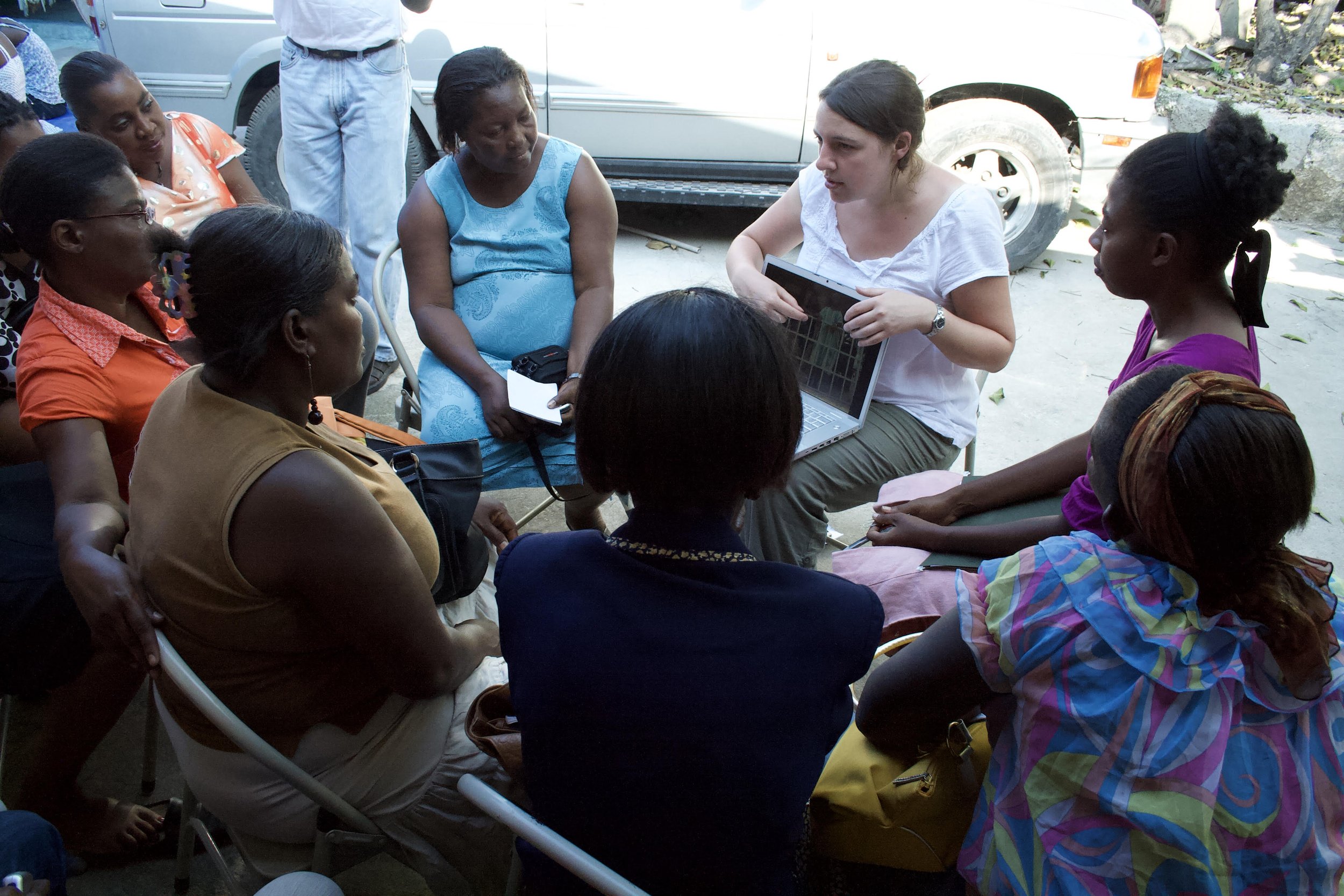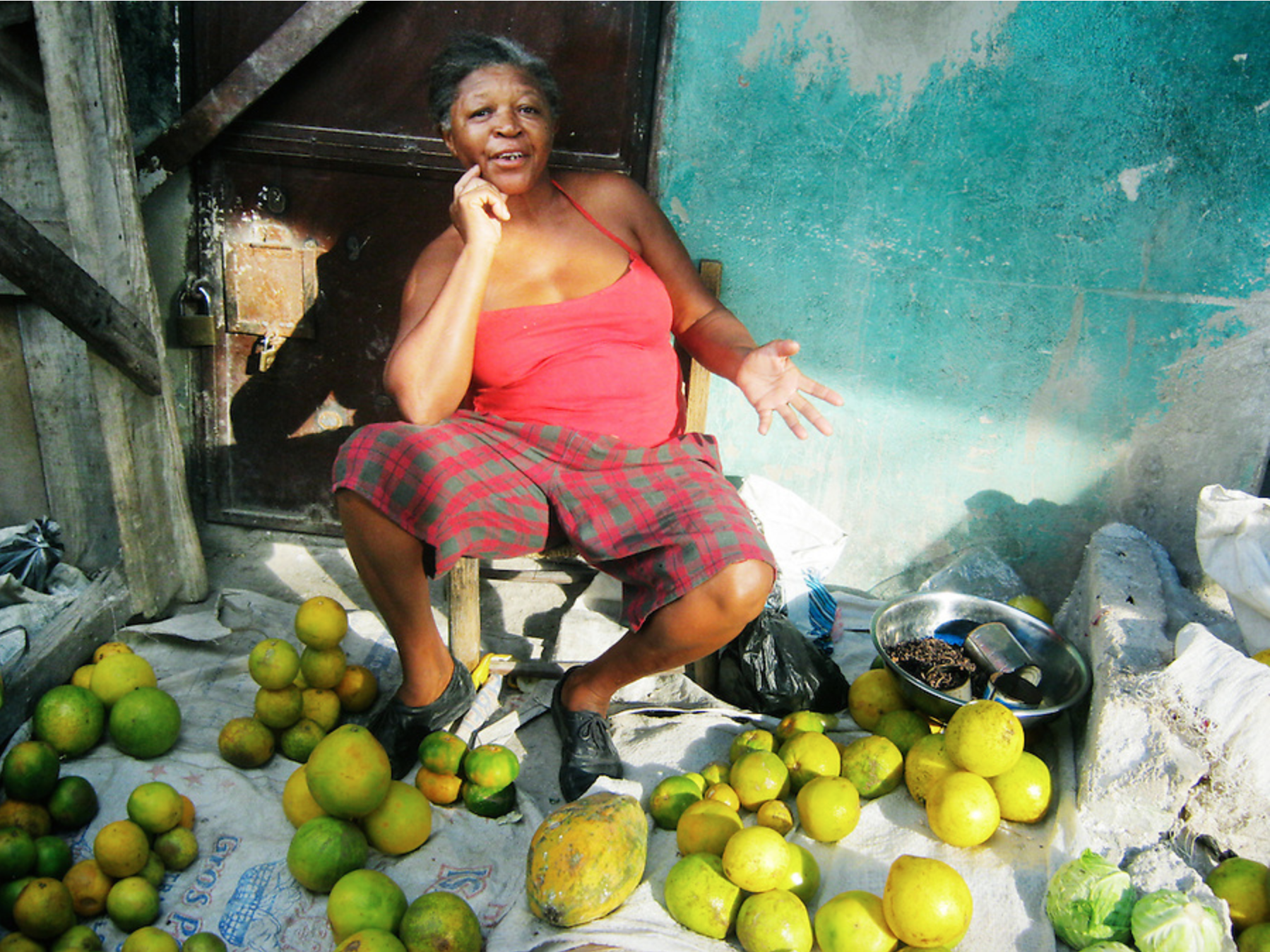Haitian Women Survivors, Technology, & Storytelling: Why I Started Variant Strategies #2
Thanks for opening this newsletter up. You’re in for a story. The second in a series of essays celebrating the incredible women I have learned from that ultimately led to the launch of Variant Strategies. To read the first post, please click here.
I’ll pick up in this newsletter where the last one left off: Near the end of my tenure at the Global Justice Center (GJC), I increasingly began seeing and being inspired by new, transformative uses of technology in advancing human rights. This post will focus on my subsequent work at Digital Democracy, learnings from courageous women survivors of gender-based violence in Haiti, and the intersection of art, human rights, and technology.
Penyen voye pwoblèm yo ale / Brushing the problems away. April 2010.
An Unprecedented Catastrophe, Unprecedented Use of Technology
In 2010, shortly after I joined Digital Democracy, a catastrophic earthquake struck Haiti, resulting in the tragic loss of over 300,000 lives and the leveling of the capital city, Port Au Prince. Digital Democracy, in partnership with Ushahidi and Open Street Maps Haiti, sprang into action. We created the first accurate digital map of Haiti and enabled humanitarian responders to locate people using SMS to text for help. Digital Democracy trained people in the camps around the clock to save lives. As we were doing whatever we could to respond to the fall out of the natural disaster, a human-created crisis emerged: Violence against women in the internally displaced persons camps. The crisis of gender based violence (GBV) in Haiti long predated the earthquake, but following the earthquake, Haiti had the highest rate of rape in the world! So, we set our focus applying the tools utilized by first responders to address the long-term GBV crisis.
Image of KOFAVIV Leadership, Malya Villard (Left) and Eramithe Delva (Right). April 2010.
Humanitarian response was forever changed by the innovations first tested in Haiti
We did our homework and learned right away that the real leaders of Haiti were the grassroots leaders living in the camps, particularly the women survivors of GBV. We met the leaders and members of the extraordinary organization, KOFAVIV, the largest and most well organized of the grassroots groups, providing medical, psychosocial, and other services to over 2000 women in Haiti. We worked closely with these women to deploy the text mapping technology to track GBV in the camps to protect women, and deter and hold individuals accountable. Digital Democracy was able to help them set up an SMS hotline to respond to the grassroots women living in the camps who had been raped. They bought and decorated a truck that went to pick the women up and bring them to the center to receive services.
We also helped them to set up a digital intake system to track conditions like lighting in specific camps with rapes in those areas. Eramithe Delva and Malya Villard, the two leaders of KOFAVIV started to get attention, being invited to testify at the Inter-American Court of Human Rights. People saw how invaluable they were. On one trip, we took them to the State Department and USAID where they helped them to figure out how to allocate funding for response to the earthquake based on findings from their new digital intake system, which influenced the way millions of dollars in recovery aid were spent.
Eramithe Delva testifying at the Inter-American Commission on Human Rights about GBV in Haiti. March 2011.
Haitian Women Were Silenced
Still, despite their courage, leadership, work, unparalleled wisdom, and critical information, these grassroots women leaders remained excluded by the UN and other Haitian NGOs from participating in the recovery efforts inside of Haiti. Indeed, the women were literally locked out of the UN and other venues where recovery efforts were being designed. The limited representation of grassroots women in Haiti was even worse because of the predominance of the foreign press, most of whom were men, shaping the narrative and coverage of the country. Grassroots women in Haiti needed to be heard. And they thought it’d be more powerful to show in addition to just telling.
Emily Jacobi of Digital Democracy (not pictured, Abby Goldberg) during the first photography training with the leadership of five grassroots women's groups in Haiti. April 2010.
But Haitian Women Became Storytellers (and Artists)
While continuing to support women in the camps to record abuses using digital mapping tools, we raised money for five simple digital cameras. Part of our goal was to establish which group we would work with and to see how familiar the women were with technology. After basic photography training, women leaders representing five grassroots groups took the cameras overnight, and the next day we saw the photographs. They were extraordinary: personal, powerful, honest, and real.
We hadn’t planned on it, but we developed a photography program at KOFAVIV through that first training. I was close friends with two top photographers in NYC, and I shared the original photographs with them and told them about Haiti and my work there. They asked: How can we help? Erin and Erica ended up donating an enormous amount of time, energy, passion, connections, and resources to the KOFAVIV photography program to help them tell their own stories. ELK Studios, in partnership with Digital Democracy and KOFAVIV, curated an original collection of 47 original photographs in large format and available for purchase online, a professional exhibition catalog also for purchase online, and a benefit event at Splashlight Studios in NYC, which raised over $20,000 for KOFAVIV’s critical services, brought in hundreds of influential viewers, resulted in significant press, and was supported by more than 50 volunteers. The leaders of KOFAVIV, Eramithe Delva and Malya Villard, were in attendance.
At Splashlight Studios Benefit for KOFAVIV, first exhibiting the Ja Nou We L collection. From Left to Right: Emily Jacobi, Malya Villard, Eramithe Delva, Erin Kornfeld, Abby Goldberg, Emilie Reiser and Erica Leone. (April 2011)
The photographs captured the post-earthquake reality of 30 Haitian women survivors of gender-based violence: tarpaulin shelters, makeshift bathrooms and kitchens. In short, a world with few doors to lock in which no one has private space. The women at KOFAVIV titled the collection: Ja Nou We L, which translates to “The Way We See It”. The goal of the series was to enable Haitian women to share their own views of life from the camps, the insecurity they faced, and ultimately to be able to tell their own stories.
Fyè pou m machann / Proud to be a vendor. April 2010.
Lessons we learned from the Haitian Women
We utilized innovative methods to fund our work, including securing financial support from the U.S. Institute for Peace for a trip to Haiti. USIP’s goal: to assess obstacles to grassroots women voting in the upcoming elections. We, of course, used this as an opportunity to continue our existing work, while pursuing their mission. I kicked off our USIP training with a session on voting and democracy, to which their eyes glazed over. Then I asked them about obstacles to voting in the upcoming elections. Silence. We took a break to figure out how to proceed, and Eramithe explained that the last time a grassroots leader (representing 80% of the population) won an election, a coup orchestrated by the U.S. had swiftly followed, resulting in the removal of the grassroots leader and the installation of a dictator. As a consequence, the Haitians had lost faith in the democratic process and they didn’t believe in democracy. They were focused on one thing: Survival. This experience turned out to be a profound lesson for us, exposing how U.S. funds were actually used to undermine democracy in Haiti. We learned more from that training than the Haitians did!
Espri li yon lòt kote / In another place. April 2010.
Getting Close with The Haitian Women Made Our Work Even More Meaningful
All of the great successes through our work in Haiti were game changing for Haitian women and work we felt really good about, but that is especially true because of the close relationship we built with the Haitian women over 6 trips to Haiti. When we went to Haiti, we stayed with KOFAVIV, and when Eramithe and Malya came to NY, Eramithe stayed with me. Whenever I went to Haiti, I would drink entire pots of coffee (and I didn’t even drink that much coffee). Then, when Eramithe came to NY, we got coffee from the local coffee shop downstairs, and she asked for a cup so that she could pour a little of the coffee in it! It was a very special exchange.
Mizè apre lapli / Misery after the rain. April 2010.
Epilogue: Still Unsafe
A few years later, in 2014, the recognition and support KOFAVIV received from the international community, including appearances at events like the Oscars and the Clinton Global Initiative, as well as testifying in important courts, Haitians became aware of the funds they received, used to provide crucial services to women, addressing their physical, psychological, and economic needs, while fostering a sense of community. That’s when the death threats from inside Haiti began.
Eramithe, filled with fear, reached out to me, urgently seeking to leave Haiti with her seven children and husband. Fortunately, facilitating Eramithe's departure was relatively straightforward as she already had a visa and had previously traveled to the United States. I purchased her plane ticket and offered her accommodation at my place for five months. However, the task became more challenging when it came to relocating her husband and seven children. Through my connections with the Urgent Action Fund, an organization I had some familiarity with, we tirelessly worked to ensure the safe transfer of Eramithe's entire family to the Dominican Republic. Over the course of 9 years, they have gradually made their way to the United States and received asylum status, although a few family members still remain in the Dominican Republic. Malya Villard also had to leave Haiti with her six children and relocate to Philadelphia.
As of June 2023, Eramithe lives in Long Island with four of her kids and a few grandchildren. Malya remains in the Philadelphia area with all of her children. KOFAVIV is still doing good work in Haiti. Among other things, they have started working with men to prevent GBV. Eramithe and Malya remain the defacto leaders and are in touch daily with KOFAVIV. They send donations from their limited income to the organization. KOFAVIV has also promoted staff to run the daily operations of KOFAVIV. Sadly, most donors have moved on.
I (along with my family) remain very close with Eramithe and her family and talk to them regularly.
***
The early uses of new technology and storytelling tools for empowering women, along with comfort in improvisation, that I learned from the women in Haiti through my work at Digital Democracy helped give me the perspective and expertise that Variant brings to every project we take on: The belief that local voices–particularly those others fight to silence–must be involved to bring about change. See our work at www.variantstrategies.com/work.
More soon,
Abby
2 Sè / Sisters. April 2010.









